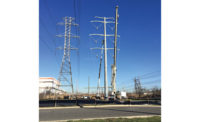New York state and city officials have big plans brewing, including sprawling developments like the $2-billion planned applied science campus on Roosevelt Island, controversial proposals like a new $4-billion convention center in Queens, and billion-dollar infrastructure upgrades like those planned for the George Washington Bridge. But industry watchers say that while such complex multi-year projects bode well for the A/E/C industry, there are likely to be speed bumps along the way.


These include issues over securing long-term construction project financing in an economy still struggling to recover from the recession, higher building and materials costs and, especially for the transit side, a Congress that has yet to pass a long-term transportation funding bill. Labor issues are also part of the equation, as relationships between managers and employees appear to be in flux. Given the challenges, some industry players say that the year ahead remains uncertain and that more than a few planned projects may get caught in the headwinds.
That has already been the case for some major work under way, including the two-phase Moynihan Station development in midtown Manhattan. Plans for the $267-million first phase, fully funded through the state and federal government, may need to be scaled back due to increasing costs, according to a recent article in The Wall Street Journal.
"Nobody knows what is going to happen with the economy, although things have been going better than they had been," says Mike Elmendorf, president and CEO of the Associated General Contractors Association of New York. "A number of economists believe we're on a roller coaster ride that will go back down before going up." This will impact funding for private work as well as revenue available for public projects, he says.
Out of the many highways and bridges in "desperate" need of attention, most have not yet even made the repair lists of state and city transportation officials "because they don't have the money," says Jeff Zupan, senior fellow of transportation at Regional Plan Association, New York. These include old roadways like the Brooklyn-Queens Expressway that was built in the 1940s, he says.
But five major bridges have made the repair list and are in various stages of planning (see table above). "In today's highway world, bridges are going to be the focus, as we have a lot in bad shape and we're not making headway on them," says Robert A. Dennison III, New York regional director of transportation design services at VHB Engineering, Surveying and Landscape Architecture, Albany. VHB has been involved in preliminary traffic studies for most of the major bridge projects.
Of those furthest along, work on the Bayonne, George Washington and Goethals bridges is slated to begin later this year.
To what extent public projects will proceed through and past the first stage, however, is largely dependent on federal funding, Dennison says. "The transportation bill has been struggling its way through Congress. It's three years expired and being done in pieces with extensions," he says. That makes it difficult for state and local authorities to plan, and so they are focusing on the most critical parts of projects first, he says. "If Congress doesn't pass the bill, or underfunds it badly, it could cause the projects that are reliant on federal funds to be extended."
With billion-dollar work in the public sector, securing funding for just the first phase has become the "new normal," says Henry L. Goldberg, managing partner with law firm Goldberg & Connolly, Rockville Centre, N.Y., which specializes in construction and government contracting. "It's not normal on a historical basis, but with neglected infrastructure and exploding new needs for the region it has become so," he says. As a result, "a lot of experimenting" is going on with various financing and risk mitigation tools, such as public-private partnerships and design-build, Goldberg says. In the private sector, he says, tools such as integrated project delivery are being experimented with to find what works best.
Developing Challenges
For private sector financing, the economic equation has changed, says Lou Coletti, president of the Building Trades Employers' Association, New York. "For developers to get financing from banks and others, they are now required to come in with a 30% equity contribution and, in some cases, with an anchor tenant before they will be considered for financing of the rest of the building," he says. "That puts enormous pressure on the need to reduce the cost of construction and puts the developer in a bind on major projects."
Gov. Andrew Cuomo (D) seemed to have had costs covered earlier this year when he announced that a potential developer, Malaysia-based Genting New York, would fund and build his proposed $4-billion, 3.8-million-sq-ft convention center adjacent to the Aqueduct Racetrack in Queens. The governor said the project, which is expected to create 10,000 construction jobs, should replace Manhattan's "not competitive" Jacob K. Javits Convention Center.
Genting signed a nonbinding agreement with the Empire State Development Corp. in January to consider developing an integrated mixed-use complex at the site. It would also include a hotel and expansion of Resorts World Casino, which Genting already operates. But it did not commit to funding all transit-related changes associated with the project. Rather, the company says it will work with the Metropolitan Transportation Authority and the state to help fund and introduce expanded service between midtown Manhattan and the site.
Critics contend that the MTA is already financially strapped and over-extended on projects critical to the existing New York City transit system.
But others, including Queens President Helen Marshall, support the governor's proposal. One of the earlier plans for the $3-billion redevelopment project in Willets Point, Queens, which saw work on storm sewer reconstruction begin last December, included a smaller convention center that Marshall also supports, says Dan Andrews, spokesman for the Queens Borough president. He adds:"Infrastructure and transportation improvements are being looked at."




